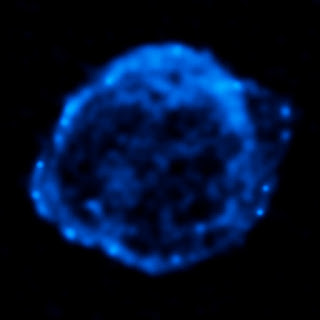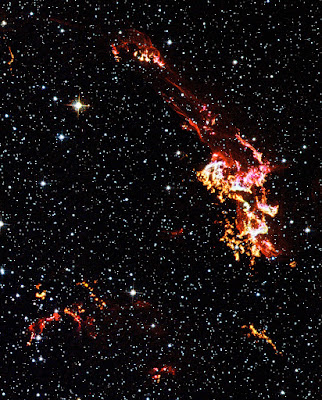Professional astronomers don't just use visible light to see the night sky. Their telescopes can also create images from wavelengths of light that our eyes cannot see, such as X-rays, radio waves and infrared rays. The images below all show kepler's Supernova - the wreckage left by a giant star that exploded in 1604.
Taken by the Spitzer Space Telescope, this infrared image shows dust clouds that were heated by a shock wave from the exploding star.
X-ray image:-

X-ray image of Kepler's Supernova

X-ray image of Kepler's Supernova
This image of Kepler's Supernova is from the orbiting Chandra X-ray Observatory. It shows a cloud of incredibility hot gas that emits high-energy X-rays.
Visible light image:-
 |
| Visible light image of Kepler's image |
Very little of the object can be seen in visible light, even in this image from the Hubble Space Telescope. The bright areas are clumps of gas.
Infrared image:-
 |
| Infrared image of Kepler's image |
Taken by the Spitzer Space Telescope, this infrared image shows dust clouds that were heated by a shock wave from the exploding star.
 |
| Combined image of Kepler's image |
Combining all three sources produces a complete image: a shell of supernova debris expanding into space at 2,000 km (1,240 miles) per second.
No comments:
Post a Comment
Let me know guys what you think about this.